This post may contain affiliate links, which means that I may receive a commission if you purchase a product after clicking at no additional cost to you.
Except for covers, most diapers needing an insert will come with a standard microfiber insert. Microfiber can be an effective insert for your cloth diapers when your baby is young. As your baby gets older, many people find it isn’t quite absorbent enough.
The first obvious sign that your microfiber is starting to lack is when your baby starts leaking through the diaper during naps or overnight.
A second sign is that moisture will start to wick from the diaper at the leg holes, leaving wet spots in the leg creases on your baby’s pants. When this starts to happen, you may want to either start doubling inserts with what you currently have, or look into new inserts for cloth diapers. However, be careful with doubling: doubling what you currently have can start to get bulky, so many families start to look at a different insert material at that point, especially if the inserts are microfiber because then compression leaks become more of a concern.
I really want to emphasize that leaking should not a constant issue with cloth diapers. If you start to experience leaks, 99{9994046f29331ee04cc0b5e07eb28364315ea03ccc2f01b5a43e8b85b372d1e9} of the time it’s due to one of the following reasons:
- Bad fit (diaper too bulky, not sealing around the legs, not fastened tight enough)
- Bad wash routine (using soaps or fabric softeners that cause repelling)
- Using types of diaper creams not recommended for cloth diapers, causing repelling
- Baby is a heavy wetter (pees a lot!) and needs more absorbent inserts or a different insert combination
- Not changing often enough– you will need to change a more frequently with cloth diapers than disposables
My youngest is definitely a heavy wetter. We were fine with the standard microfiber inserts until he was about five months old, and then we had to start looking into different insert combinations. Here I will share with you some of my favorite diaper inserts for the heavy wetters out there.
If you haven’t picked up on it from my site yet, I’m pretty economically minded. There are many high-end inserts out there that get rave reviews, but in this post, I’m going to share some of my favorite inserts for families on a budget.
Getting a Good Fit
Before buying new inserts, you can try doubling up on the ones you have. You will have to play around with it to find a combination that works. The only thing I caution with doubling is that depending on the material, it could make your diapers very bulky. If they are too bulky, they will not seal around the legs. If they don’t seal around the legs, it doesn’t matter how absorbent your inserts are–the pee will leak right out!
I do lots of doubling with my toddler, but I like to double inserts that are trim and extra absorbent to get the most absorbency for the trimmest fit.
If you made sure you’re getting a good fit with your diapers and know you are going to need to invest in some better inserts, here are my favorites:
Bamboo
Bamboo is a highly absorbent material, making it extremely popular in the cloth diaper world. It can hold quite a bit of liquid, plus it is trim, so layering is even easier if needed.
Because it can hold so much liquid, bamboo is also a popular option for nighttime. Bamboo is a naturally hypoallergenic material that has the added benefit of being antimicrobial, which helps with odors.
You can use these as an insert in your pockets, but you can also set them inside a cover or all-in-two system. You will certainly be happy with your bamboo inserts.
KaWaii Baby makes economical bamboo inserts that you may want to consider.
Prefolds
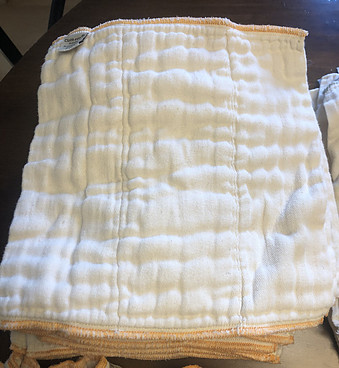 Prefolds are actually one of my favorite inserts to use! They are highly absorbent, and when padfolded can fit well right inside a pocket or cover.
Prefolds are actually one of my favorite inserts to use! They are highly absorbent, and when padfolded can fit well right inside a pocket or cover.
Even if your child has outgrown a prefold size for regular wear, you can even continue to use prefolds that are too small when wrapped as inserts. You can get so much more life out of them this way.
I love unbleached cotton prefolds from Green Mountain Diapers, but Osocozy makes wonderful prefolds as well.
Any prefold will do, but I prefer unbleached for the following reasons: they tend to be slightly more absorbent once fully prepped (though they do take longer to fully prep than bleached, so initially the absorbency may be a bit less), unbleached fibers are more durable so they don’t wear out as quickly, and they are softer.
Flour Sack Towels

I use them for everything now–some for diaper inserts, some are kitchen towels/eco-friendly paper towel replacement, napkins, use in place of cheesecloth for recipes, etc. They are so versatile and very cheap.
Flour sack towels are very thin, but they are incredibly absorbent. You can fold these into a rectangle that will fit inside your diaper pocket (or on top of a diaper cover) and use them alone as an insert in the diaper, that’s how absorbent they are!
The only downside to this type of insert is the folding. But honestly, I just love these things so much. Even though they aren’t my primary insert, I use them several times a day for other uses. The perk is that if I’m running low on inserts and need to do laundry, I’m covered!
Some people will use flour sack towels as flats under covers, but I prefer to pad fold them because I get more layers of absorbency where I need them most.
These Utopia flour sack towels do an awesome job and are one of the softest brands.
Hemp
Hemp is another natural fiber that is very absorbent. It also has the benefit of being trim. These Thirsties hemp diaper inserts have six layers and can be a God-send for overnight.
Hemp holds 2.5 times more liquid than microfiber, so one of these inserts may be perfectly suitable on its own. You could also pair it with another trim insert, like a newborn microfiber, for an extra boost when you need it to last a while.
These inserts also have some layers of 100{9994046f29331ee04cc0b5e07eb28364315ea03ccc2f01b5a43e8b85b372d1e9} cotton in them–hemp is one of the most absorbent materials, but it is also slow at absorbing. Having some layers of cotton can help things soak up more quickly.
You can use these inserts with pocket diapers or with covers. Hemp is safe to touch baby’s skin, unlike microfiber (if microfiber is left to touch the skin directly, it will pull moisture out of baby’s skin when it gets wet, causing bad rashes and irritation).
Runner Up–Charcoal Bamboo

I would argue against that, though. There is microfiber in these inserts, yes, but there is also some bamboo fleece. In my experience, they work much better than plain microfiber, and there is the added bonus of how trim they are. They are also economical.
These charcoal bamboo inserts are definitely a favorite! They have 5 layers, microfiber in the center, and bamboo fleece around the outside. Having some microfiber in them keeps them economical, but you have the bonus of the bamboo layers, which adds absorbency and helps keep any odors at bay.
Even though they have 5 layers, they are thin–thinner than many standard microfiber inserts. This helps reduce bulk. I like to pair them with a newborn insert (just one of the ones that came standard with my diapers when I purchased them) for a little extra absorbency.
Using a charcoal bamboo on its own or paired with a newborn insert keeps the diaper fairly trim, ensuring that you still get a good fit around the baby’s legs, while allowing for more absorbency.
What insert you want to get will depend on your situation. These are a step up from regular microfiber, though maybe not as heavy-duty as the other options I have given.
So Many Options!
Almost all babies will eventually outgrow a single microfiber insert. We live in an amazing time when there are SO many options for cloth diapers. There are so many solutions and products available that anybody can be successful with cloth diapering. Don’t let the fear of leaking stop you from trying cloth diapers. Leaking is easily fixed once you know the reason!
What are some of your favorite insert combinations? Share them in the comments below!


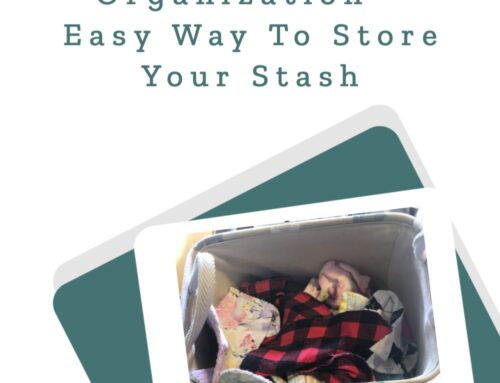
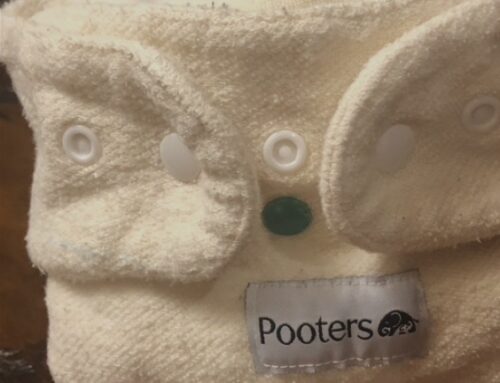
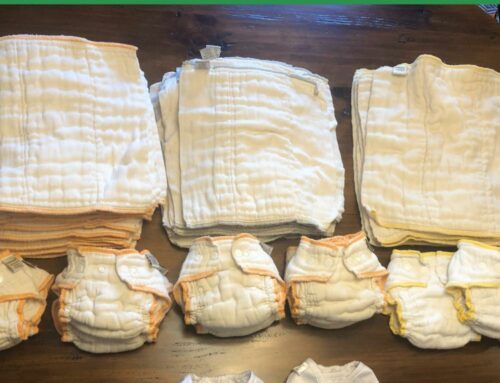
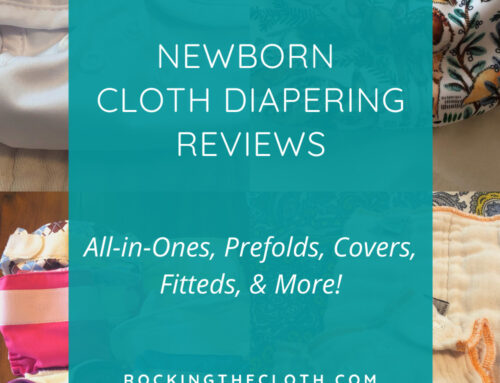
We always use disposable diapers for our youngest because our biggest issue with cloth diapers is that they’re not as absorbent. Your article gave me a new insight in this matter and maybe we should investigate this a bit, as from an economical point of view it would be better to use cloth diapers. Thanks for this valuable info!
No problem, Jurgen. Glad it helped!
Hi Holly!
I’ve cloth diapered both of my kids: my 11 year old and my 2 year old. It’s been a life and budget saver! Although I cloth diapered, I never used inserts. I always used the Green Mountain Diaper workhorse diapers, which worked great for us. In the beginning, I was considering inserts because I wasn’t sure if I’d have a heavy wetter (like you mentioned). Even though I haven’t used them as inserts, I can TOTALLY agree with you about flour sack towels! I use them DAILY. Babies make so many messes and paper towels can add a huge chunk onto the grocery budget if you’re not careful. Flour sack towels have saved us from buying many packs of paper towels!
Awesome Tiffany! I have heard amazing things about the workhorse diapers, though I’ve never tried them myself! You’re tempting me to get a couple! 😉 Thanks for sharing your experience!
I’ve heard of cloth diapers before, but I didn’t know much about them. I didn’t realize there were that many options out there, wow! Thank you, this was very informative. That’s cool that you can get so many other uses out of the flour sack towels. I may have to look into those as a replacement for paper towels. I go through those like crazy.
Yes, they are my go-to replacement for paper towels. I have a whole drawer in my kitchen devoted to them now!
Having only used cloth diapers for my children, as babies, but find that my children and most of their friends use disposable diapers, it is very refreshing (excuse the pun) to hear of people going back to use cloth diapers. I am very interested in hearing about the flour sack fabric. I really havn’t come across that here (South Africa) for years but realize it would be very useful for so many things.
I had a business making medical garments and some of the garments I made were washable incontinent underwear for men and women. These sold very well as the disposable ones are so expensive and also have the problem of not breaking down for many years, if ever, on the dump.
How I wish the hemp and charcoal bamboo inners were available then. I had to scour the fabric shops for any fabric I thought would work. I did eventually find something but for the life of me I cannot recall what it was.
Well done.
Thank you, Jill! I’m so glad we have all of these options for inserts for cloth diapers now! It definitely makes it so much easier!
This is just great..a hemp diaper?! That’s just the best idea ever. I wish I had all these options back when I had my kids in the 90’s. If I could go back in time I would definitely use organic and cloth diapers. I know they are a lot to maintain but its good for the baby and the environment. Thank you so much for the cool selections you have here.
No problem! It really is a great time to cloth diaper! So many solutions nowadays.